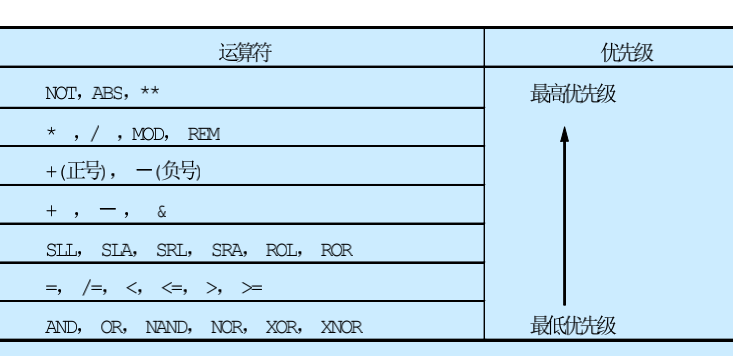对象
Constant(常量),Variable(变量),Signal(信号)
语法规则
1、保留字(int),对象(Architecture),函数,过程(process)组成的。
2、大小写不敏感
3、句末用“;”结束
4、对空格键不敏感
5、用--来注释
命名和标签
1、所有名字(字母数字下划线),以字母为首。
2、不能使用两个"_"
3、不能是关键字,名字必须独一无二地存在。
对象的声明
class object_name data_type [:int:value]
class:对象类型,(Constant,Signal,Variable)
object_name:对象名
data_type:数据类型(int,std_logic,std_logic_vector )
[:int : value ]: 初始值,可省略
例如
Constant a : integer := 100
Singal b : bit_vector(3 downto 0)
对象——变量和信号的赋值
Variable(Signal) tmp : std_logic_vector ( 7 downto 0 )
1、变量“:=” , 信号"<="
2、All bits :
tmp :=(<=) "10001000"
tmp :=(<=) X"88"
3、Signal bit:
tmp(7) :=(<=) '1'
4、Bit-slicing:
tmp( 3 downto 0 ) = '1111'
变量和信号的作用域范围

信号与变量的比较

数据结构
标准数据类型(std)和 标准逻辑数据类型(IEEE)
标准数据类型(std)
bit:2逻辑('0','1')
bit_vector:bits数组
signal A : bit_vector( 3 downto 0 )
signal B : bit_vector( 0 to 3 )
表示方向不同,位宽却一样
方向指的是"0001",可以是第0位,也可以是第3位,根据定义的方向不同。
( 3 downto 0 ) -> 第0位
( 0 to 3 ) -> 第3位
boolean:
false/true
integer
signal tmp : integer (32bits)
singal tmp : integer range 0 to 255 (8bits)
标准逻辑数据类型(IEEE)

运算符




